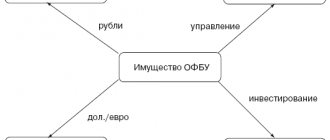The modern economy is a complex structure in which investments have a special place. The latter, in turn, with the simplest classification, can be divided into risky and relatively risk-free. Risk investments are also called venture investments, and here venture funds play a separate important role.
This article explains in detail what a venture fund is, how it works, how it differs from a venture capital company, and which funds are included in the TOP 10 by investment size in 2022.
- What is a venture fund
- A venture fund and a venture company are not the same thing.
- Types of venture funds
- How does a venture fund work?
- How to create a venture fund
- How to raise money from a venture fund
- Best Venture Funds in 2021
What is a venture fund
Concept of a venture fund
Venture fund
is a type of investment fund that invests money in high-risk startups, securities, or private equity investments with the goal of achieving extremely high returns. According to statistics, about 70-80% of venture investments “burn out” and only 30-20% pay back all the funds invested, including those that did not bring results.
☝️
About 90% of venture capital investments have the highest degree of risk.
By registering its fund as a venture fund, the company automatically receives the rights to conduct more risky investment activities (there is no obligation to diversify risks), buy corporate rights, and issue loans to companies.
Sources of venture fund financing
A venture fund can receive funding from various sources:
- State corporations and companies;
- Individuals;
- Banking institutions;
- Pension funds;
- Investment companies.
Venture fund funds can be used to finance projects from any industry (however, at the same time, there are also industry venture funds
, which sponsor projects from certain areas). The stage of development of the project is also unimportant - even startups that are at the idea stage can receive money.
In 2022, most venture capital funds will invest in the following industries:
- Information Technology;
- Pharmaceutical sector;
- Healthcare;
- Industry;
- Real estate;
- Trade.
☝️
The main goal of a venture fund is to obtain excess profits, so most of the projects in the fund’s portfolio are startups with the potential for rapid growth or promising projects of well-known companies.
What a venture fund is is explained in simple words in the video below:
Venture fund in simple words
Sources of financing
The capital managed by venture funds consists of investments:
- government organizations;
- individuals;
- banks;
- pension and other funds;
- investment companies;
- banks.
Sources of financing may also include other investors who meet the requirements of the venture fund.
A venture fund and a venture company are not the same thing.
Venture fund management company
A venture fund and a venture company are two different concepts, although in Russia they are usually used as synonyms. But from the point of view of terminology, this is incorrect, since a company (or firm) is a legal structure and the individuals who are part of it and manage funds. And a fund is precisely the assets managed by a venture capital company.
In Russia they often say “Pantera Caüital venture fund,” but this is incorrect, since Pantera Caüital has many different funds that differ in the type of assets, industry focus, geographic policy, etc.
several funds under management
, therefore, it is more correct to use either simply the name of the company, or use the expression “management”, “venture firm”.
Runa Capital
Founded by Russian entrepreneur Sergei Belousov in 2010. The foundation's headquarters are located in Palo Alto, California, USA. The fund manages $340 million. The average share of participation in startups is from 20 to 40%, the average contribution is $3 million.
In total, the fund invested in 35 startups, the most successful projects of the fund are the Rolsen household appliances brand, the Parallels cloud service platform, as well as the Internet services Nginx, Jelastic, LinguaLeo.
Homepage
Types of venture funds
Types of venture funds
Venture funds can be divided into several types, depending on specific characteristics. The classification below is typical for Russian venture funds.
By
capital
formation :
- State;
- Private-public;
- Corporate (foreign and Russian);
- Personal (business angel venture funds).
By geography
investments:
- Investing in Russian companies;
- Investing in foreign companies.
By volume of funds
:
- Small (up to $50 million);
- Medium ($50-150 million);
- Large (from $150 million).
By region
investments (only in Russia):
- Federal;
- Regional.
Industry venture funds
By industry
focus:
- Universal (invest in different industries);
- Highly specialized information technology venture funds;
- Highly specialized venture funds of the real economy.
By investment stage
:
- Pre-sowing, sowing, starting;
- For development and scaling.
By level of investment portfolio diversification
:
- Poorly diversified;
- Highly diversified.
Some facts about venture funds in Russia:
- State venture funds occupy 30%, corporate and financed by business angels – 70%;
- More than 90% of funds finance the Central Federal District (Moscow and surrounding cities);
- 80-90% of funds finance exclusively the information technology sector;
- Only 10% of funds engage in seed and seed investments.
How does a venture fund work?
The principle of operation of a venture fund
How a venture fund works:
- Venture fund managers receive a list of investment projects that have applied for funding.
- Relevant documents are drawn up.
- The fund selects projects and startups to which funds will be allocated.
- Participants in the venture fund contribute funds and the management company also allocates money.
- The venture fund provides stage-by-stage financing of projects.
- The venture fund provides control and advice throughout the entire stage of project financing.
- At the end of the financing stage, the fund receives income from the sale of shares and/or its share in the business.
- Profits are distributed among the participants of the venture fund.
Let's consider some important points in the work of a venture fund.
It all starts with the venture fund receiving applications for funding. Most companies themselves send applications to a venture fund to receive funding, but 90% of them are eliminated at the initial selection stage. Causes
can be very different:
- Incorrectly drawn up business plan;
- Poorly completed documentation and application;
- Inconsistency with industry, geographic, scientific and technical, etc. fund policy.
The 10% who passed the initial selection proceed to the next stage - analysis of risks, marketing and economic profitability.
☝️
As a result, only 1-2% of companies receive funding from a venture fund.
On average, one fund finances 10-15 projects at once, of which 70-80% will fail and only 20-30% will bring excess profits and recoup failed investments.
☝️
Based on this, we can name the main rule that venture funds follow - to invest money exclusively in those projects whose profits in the future will reach the size of the initial capital. Therefore, companies with systematically slow revenue growth are not included in the sphere of interest of venture funds.
Venture fund investment objects
Which companies are the object of investment by venture funds:
- Projects (sometimes even at the idea stage) that are engaged in primary development or conduct research to release a promising product and need funding;
- New companies that have just entered the market and need funds to scale their activities;
- Companies that are developing a new product;
- Well-known developed companies that need additional financing to increase production speed and expand sales markets.
According to statistics, most venture funds prefer to invest in developed companies.
Despite the fact that a venture fund represents a medium- to long-term investment (from 3 to 10 years), at the end of the round the management company always
exits a startup (unlike strategic investors and some business angels). Correctly determining the moment to exit a business is one of the most important tasks of a venture fund.
☝️
This should be the point of development when the growth of the startup’s profitability will slow down, move into the stage of systematic increase in income and stop bringing in excess profits in a short time.
Exit from the investment round can occur through the sale of securities or shares in the business:
- On the stock market through IPO;
- Strategic investor;
- Startup founders.
Concept and significance for economics
In simple words, a venture fund is an organization, an investment company that finances high-risk, but potentially highly profitable investment projects in various sectors of the economy. As a rule, these are completely new ideas that are equally likely to take over the world and bring millions to owners and investors or never turn into a successful business.
Translated from English, the word “venture” or venture means risky, to take risks.
Just a few examples of successful global venture investments will give a better understanding of what it is and why funds take risks by investing in the development of risky projects:
- Mark Zuckerberg's Facebook was funded in 2005 by $12.7 million from a venture capital fund. Today the company's value is more than $537 billion.
- Alibaba is a Chinese online platform for meeting sellers and buyers. Friends of the project founder invested $60 thousand in its development. Later, other venture investors appeared. The cost for October 2022 is $460.55 billion.
- Dropbox is a cloud for storing data in virtual space. Initially, $257.2 million was invested in its creation and development. And the current value of the company is estimated at $8.29 billion.
- Xiaomi is a Chinese company producing mobile gadgets. $507 million was needed to launch it. Today the current value is $292.45 billion.
- Zalando is a German company that sells clothing and other products online in Europe. Its current value is $10.43 billion. This is more than 200 times the initial investment of $49 million.
The list can go on for a long time. There are thousands of projects all over the world that were brought to life only because venture investors believed in the idea. No bank would ever give loans for them. And now these are the largest and highly profitable companies making a significant contribution to the economy of their country and the world.
Complete information about current strategies that have already brought millions of passive income to investors
In Russia, Yandex has become the largest and most famous project. The risky type of investing in Russian companies is not yet so widespread. There are too many barriers to the development of this tool. These include sanctions, corruption, and bureaucracy.
The importance of venture investing is enormous. Economic growth today is only possible through the massive introduction of innovations in all sectors. Without investment, the developments of scientists and simply talented enthusiasts will remain in their heads and on paper.
I work at a university and know from personal experience how difficult it is for science to get funding. What can we say about ordinary inventors (for example, such as Mark Zuckerberg), who have never had anything to do with research institutes and academies of sciences.
More than 100 cool lessons, tests and exercises for brain development
Start developing
Even from the successful projects listed, you can understand which areas are attractive to risky investors. These are IT technologies, retail, communications. Sectors such as medicine, transport, industry, and construction are considered promising.
Objects of venture investments:
- Ideas that have not yet found real implementation. The owners can only boast of their desire to win over consumers.
- Existing companies that are trying to implement new developments on their own and reach a higher level of development. They need additional research and testing of goods, technologies, and services.
- Established enterprises that have already created an innovative product or service. You need capital to enter the mass market.
How to create a venture fund
The principle of creating a venture fund
How to create a venture fund:
- Create start-up capital.
- Form an investment strategy.
- Select jurisdiction.
- Select investment region.
- Prepare documentation for conducting activities.
- Form a team.
- Start investing.
Let's look at some points in more detail.
This issue is most relevant for private investors who have relatively large starting capital.
☝️
It is recommended to allocate no more than 10-15% of all savings for the formation of a venture fund.
For a small investor (business angel), the best option would be to form a venture fund for seed and start-up investments
, since the capital in this case can be about $2 million. To participate in the financing of large well-known companies, the starting capital should be about $10-15 million.
When choosing a strategy, first of all, the investment period is selected; on average, you need to count on 5-10 years. When investing in particularly promising companies, it can be significantly less and be about 3 years.
Jurisdiction of a venture fund in Switzerland
When choosing a jurisdiction, pay attention to an offshore zone, for example, the Cayman Islands. You also need to decide in which companies you will invest - Russian or foreign. The latter, in particular, require more funds to launch a venture fund.
Assembling a team is perhaps the most important stage, since the success of the venture fund will directly depend on how well the staff is selected. On average, operating expenses (office maintenance, if remote work is not planned, salaries) for the entire period of work will amount to 1-2% of the starting capital. If the project is successful, the team receives 15-20% of the profit.
Structure
Young businesses have limited access to finance. Due to their status, they cannot obtain money through bank lending or other traditional options for attracting investment capital. The venture fund helps such enterprises by financing them, and the funds are provided for a sufficiently long period (3-8 years), necessary to successfully overcome all stages and reach a stable profit.
The venture investment process involves:
- Venture fund: founders and investors;
- Management Company;
- Investment object: business project, startup, technology, innovation.
Companies such as Apple, Microsoft or Intel are usually cited as striking examples of successful venture investment. These major international corporations were also seen early on as risky ventures with an uncertain future. You yourself know very well how it all ended.
How to raise money from a venture fund
Raising money from a venture fund
How to raise money from a venture fund:
- Draw up a competent business plan. Draw up documents (investment terms, deal structure, venture investment agreement).
- Make a list of venture funds of interest.
- Send out applications.
- Pass the selection.
- Get funding.
A good business plan is half the battle, as it is the first document that investors evaluate.
☝️
And when investing in venture capital, you need to have a very high-quality business plan, since potential investors must be convinced that “it’s worth it,” despite the high level of risk.
Other documents also play a very important role, especially the investment agreement - everything must be spelled out clearly and transparently in it, otherwise the investor may refuse at the final stage.
You can find venture funds that would like to invest in your project on various specialized Internet resources. For example:
- Business incubator and accelerators - 500Startups, TechStars, Ycombinator;
- Business social network LinkedIn.
In addition, you can attract investments from business angel venture funds, especially if you have a promising project with an original idea. According to statistics, business angel venture funds often invest in projects with a very high degree of risk. You can find business angels on the following resources: Funded.com, Angel Capital Association, Angel Investment Network.
Summary
So, the venture market is characterized by the fact that its main participants in the status of investors are ready, first of all, to take risks in making significant investments - but only in the most promising business projects, in their opinion. Ambitious startups in the technological and financial spheres have excellent chances to receive venture investments - as those that can rightfully be classified as the most dynamic business segments today.
The Russian venture market is actively developing. Its capitalization is already in the billions of dollars, and there is every reason to expect that it will grow. Russian venture investors also play a significant role in the international market.
The main drivers of the Russian venture capital market include a strong engineering school (especially in IT), the macroeconomic attractiveness of the national economy for foreign investment, and a low level of competition in many industries. The development of the Russian venture capital market is the most important factor in the modernization of the national economy, and the state takes the most active part in stimulating such development.










